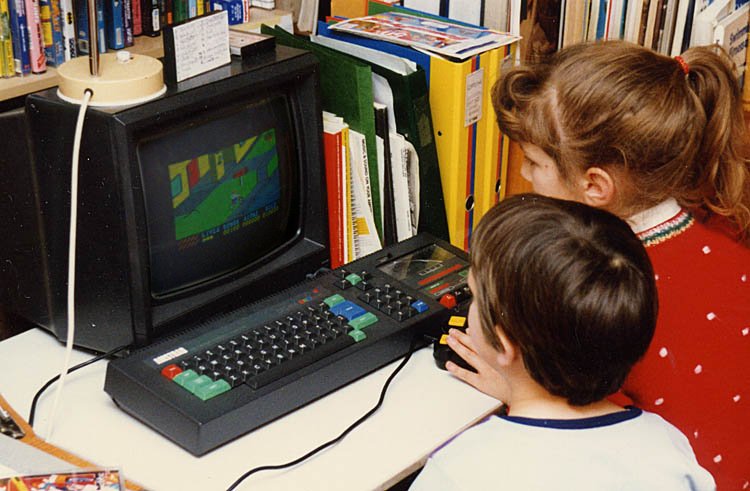KL. Paper Boy
| Your team has an honorable daytime job: you deliver the local newspaper, which contains absolutely essential information about the ongoing zombie apocalypse. Despite of the sudden drop in interest, you and your team decide to implement the best effort service described in your contract and deliver all the papers even if there are no readers anymore. Less traffic on the streets will speed up the process anyway. |

https://upload.wikimedia.org/wikipedia/commons/6/68/Cpc464.computer.750pix.jpg |
In this task, you have to implement real time dynamic control of 3 simulated bicycles. You have to deliver newspapers, perform stunts, and run obstacle courses in a world full of hazards.
Score for this task is the sum of two halves (both for maximum 2500 points each): "delivery" and "agility".
Delivery
In "delivery", each of your bicycles can gather game points by delivering paper and completing obstacle courses. For each hour of the contest, the game points gathered by the teams are scaled against each other in a linear manner to get the contest score (best team gets maximum hourly score, worse teams get the maximum hourly score multiplied by the ratio of their points to the points received by the best team). Game points are reset after each hour.
In each hour, every mailbox, checkpoint and course are worth points only once per bicycle. To get the theoretical maximum score for a game hour, each bicycle would have to visit every mailbox and checkpoint, and complete every course once, inside the hour.
Each mailbox and checkpoint has a "level": 1 to 4 (easiest to hardest). Courses are chains of checkpoints, and their score is determined by the level of their last checkpoint.
To receive points for a mailbox, a bicycle has to throw a bundled up newspaper and hit the mailbox. Each bicycle can only carry 30 newspapers at once. Newspapers are replenished by touching a reset point, or forcing a manual reset.
To receive points for a checkpoint, a bicycle just has to touch the checkpoint.
To receive points for a course, a bicycle has to touch all checkpoints in the checkpoint chain in order, reaching each subsequent checkpoint within 30 seconds after the previous one, without touching any other checkpoints or any resetpoints.
Awarded game points:
- Mailbox level 1 - 1 point
- Mailbox level 2 - 5 points
- Mailbox level 3 - 10 points
- Mailbox level 4 - 20 points
- Checkpoint level 1 - 2 points
- Checkpoint level 2 - 8 points
- Checkpoint level 3 - 16 points
- Checkpoint level 4 - 32 points
- Course level 1 - 20 points
- Course level 2 - 80 points
- Course level 3 - 160 points
- Course level 4 - 320 points
- Manual reset on a bicycle that's alive - -1 point
The hourly maximum contest score is 2500 divided by 24, multiplied by 0.5 for the first hour, 1.5 for the last hour, and linearly scaled in between.
Agility
The game tracks the completion time for obstacle courses (although the time doesn't matter for the "delivery" score). In each 6 hour period, leaderboards are built for each course completed by at least one team, using the completion time: the quickest team gets first place. For each course that the team completed at least once (with any bicycle), a value is calculated:
level * 0.8place-1Where place is the place in the leaderboard for the course (starting with 1), and level is the difficulty of the last checkpoint in the source (1 to 4). These values are then summed for the team, and the results are scaled against each other in a linear manner, with maximum score for each 6 hour period being 2500 / 4 = 625.
Bonus Task
Until the end of the 22nd hour (7:00), you can submit your own bicycle map
(a file in the described map format), to the "Paper Boy - Your Own Map" task in
the submission system. We don't plan to award any score for this. However,
if we find a team-submitted map that we like that happens to work in our engine,
we'll swap the game map to the team's map for the last hour of the contest (from 08:00).